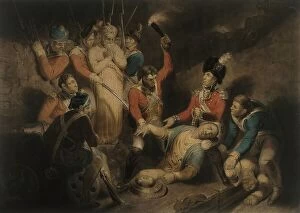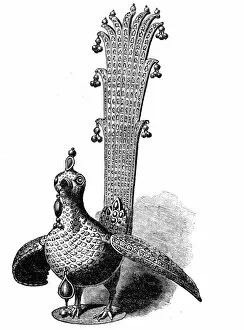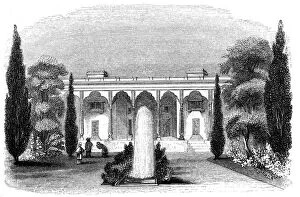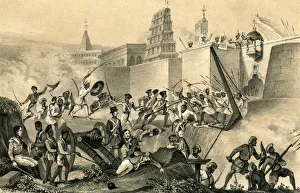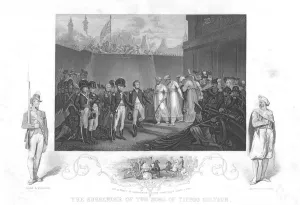Tippoo Sahib Collection
Tippoo Sahib, also known as Tipu Sultan, was a prominent figure in Indian history during the late 18th century
All Professionally Made to Order for Quick Shipping
Tippoo Sahib, also known as Tipu Sultan, was a prominent figure in Indian history during the late 18th century. Born in 1750, he ruled the Kingdom of Mysore and became known for his resistance against British colonialism. The first image from 1830 depicts an unknown artist's interpretation of Tippoo Sahib. Although the creator remains anonymous, it showcases his significance even years after his death. Speaking of which, the second engraving captures the moment of Tippoo Sahib's demise during the Siege of Serigapatam in 1799. Moving on to c1891, James Grant brings us two illustrations showcasing Tippoo Sahib at different locations - one at Travancore and another portrait-like depiction. These images provide glimpses into his life and military exploits. The battles involving the British Army are depicted through engravings such as Cuddalore and Seringapatam. These battles were significant moments where Tippoo Sahib clashed with colonial forces. A sword with its scabbard found near Tippoo Sahib's dead body at Seringapatam is showcased through a chromolithograph. This artifact symbolizes both his bravery and defeat in battle. Another interesting item associated with him is Tipus Tiger, a wooden mechanical toy depicting a tiger attacking an East India Company soldier. It serves as a reminder of Tippoo Sahib's fierce resistance against British rule. Shifting focus to cultural aspects connected to him, we have The Grand Buffet from St. Georges Hall in 1844 and Tippo Saibs peacock from that same year. These pieces highlight how he influenced artistry during that time period. Lastly, Lord Cornwallis receiving the Sons of Tippoo Saib portrays an event from around the late 1780s when Cornwallis met with Tipu Sultan's sons after their father's defeat by British forces.

